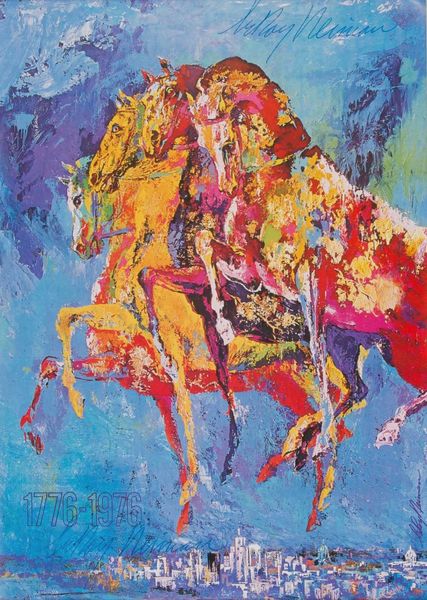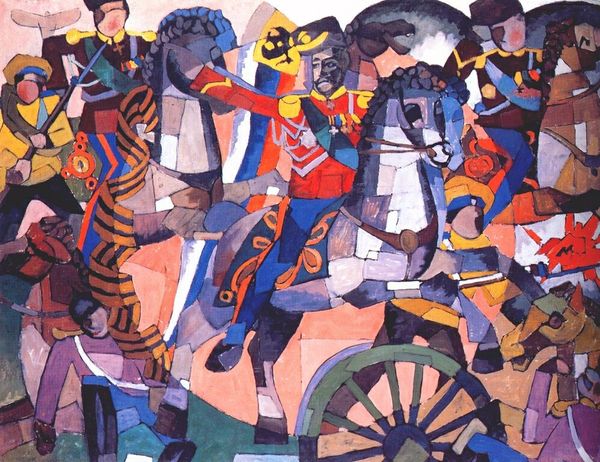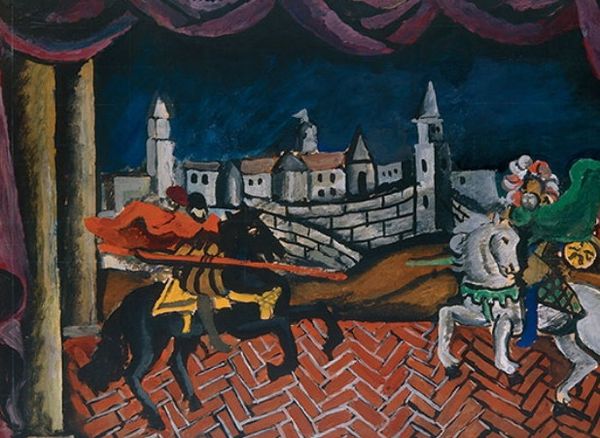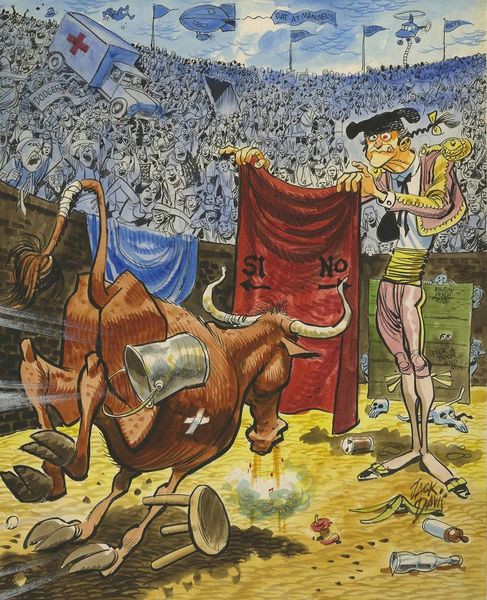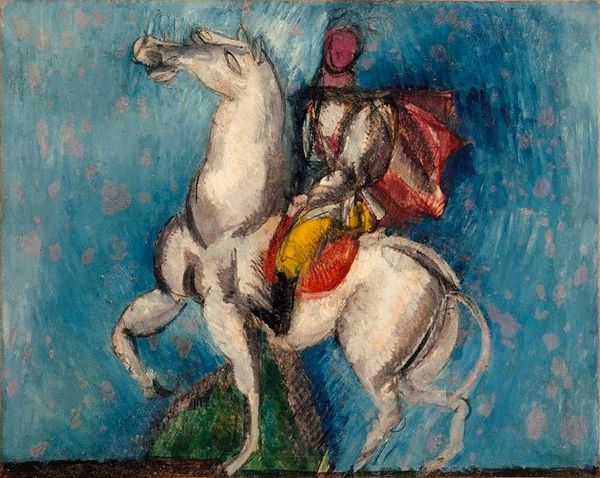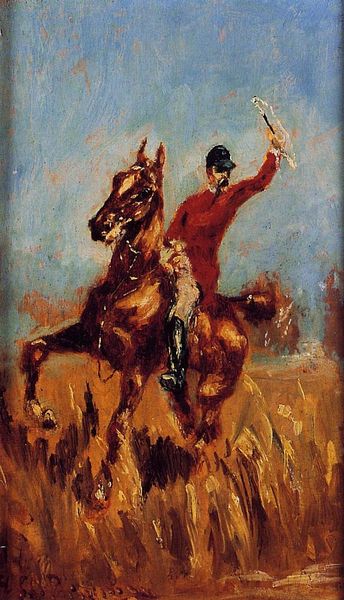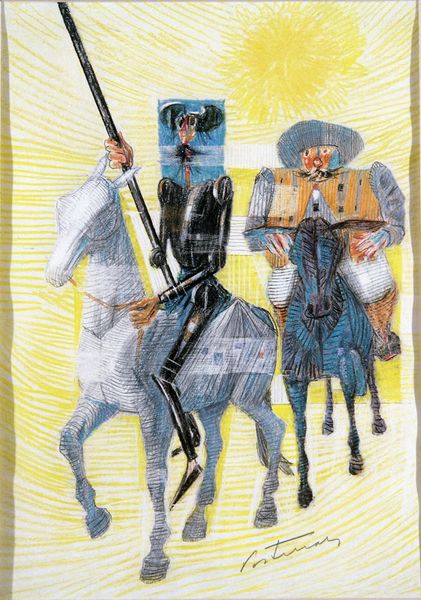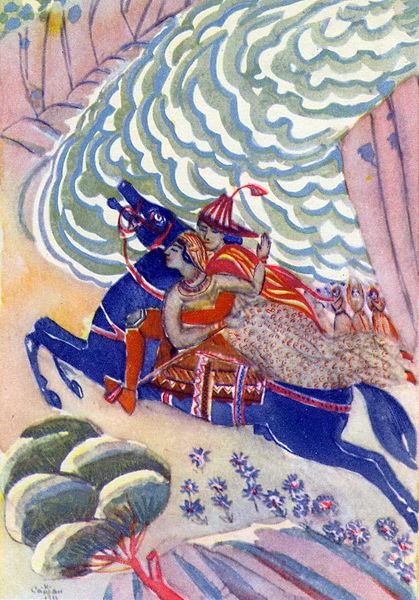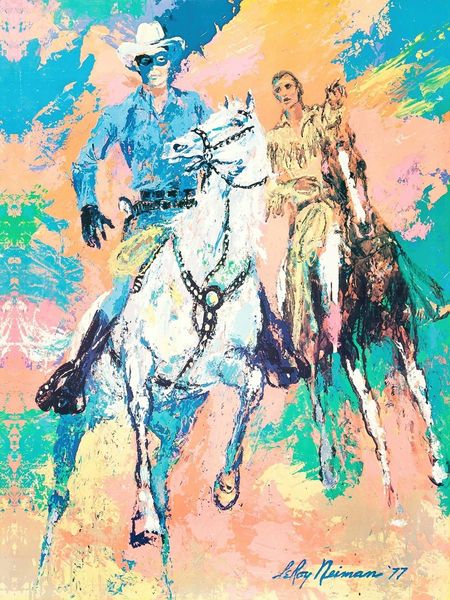
Copyright: Public domain US
Editor: This is "The Duke of Reichstadt," painted by Raoul Dufy in 1915, using oil paint. It's striking – the bold colors and slightly distorted figures create such a strong, almost theatrical feeling. What stands out to you, especially considering Dufy's artistic intentions at the time? Curator: Dufy certainly gives us much to consider here. The Duke, Napoleon's son, is rendered almost as a specter, emerging from this vibrant, Fauvist landscape. Note how the symbols of power - the horse, the uniform, even the elevated position – are offset by the raw, almost frantic brushstrokes. Doesn’t it feel like Dufy is presenting us with a memory, or even a fantasy, of imperial grandeur, rather than a factual depiction? Editor: It definitely does. So, the bold colors and almost chaotic brushwork aren't just stylistic choices; they contribute to the emotional weight? Curator: Precisely. Consider how the intense blue, a color traditionally associated with royalty, is almost overwhelming, bordering on unsettling. Could it symbolize the immense pressure and scrutiny the Duke lived under? Or perhaps the fragility of his inherited power? The horse too—typically a symbol of strength—appears almost feverish, unstable. Do you think that contributes to the sense of unease? Editor: Absolutely. I hadn't considered how the Fauvist style choices reinforced that symbolic instability, almost suggesting that the Duke's power and legacy were more fragile than they appeared. I thought the landscape was merely decorative. Curator: Often what seems “merely decorative” speaks volumes. What appears to be decorative also tells its own story about memory and association. And that brings me to thinking about art and what it remembers, in effect the power of symbols. Editor: I'm glad you pointed that out. It’s shown me how symbols and stylistic elements intertwine to convey deeper historical and emotional meanings, rather than it just being an interesting painting. Curator: Indeed. It reminds us that images can be powerful cultural vessels, carrying encoded narratives through time.
Comments
No comments
Be the first to comment and join the conversation on the ultimate creative platform.
